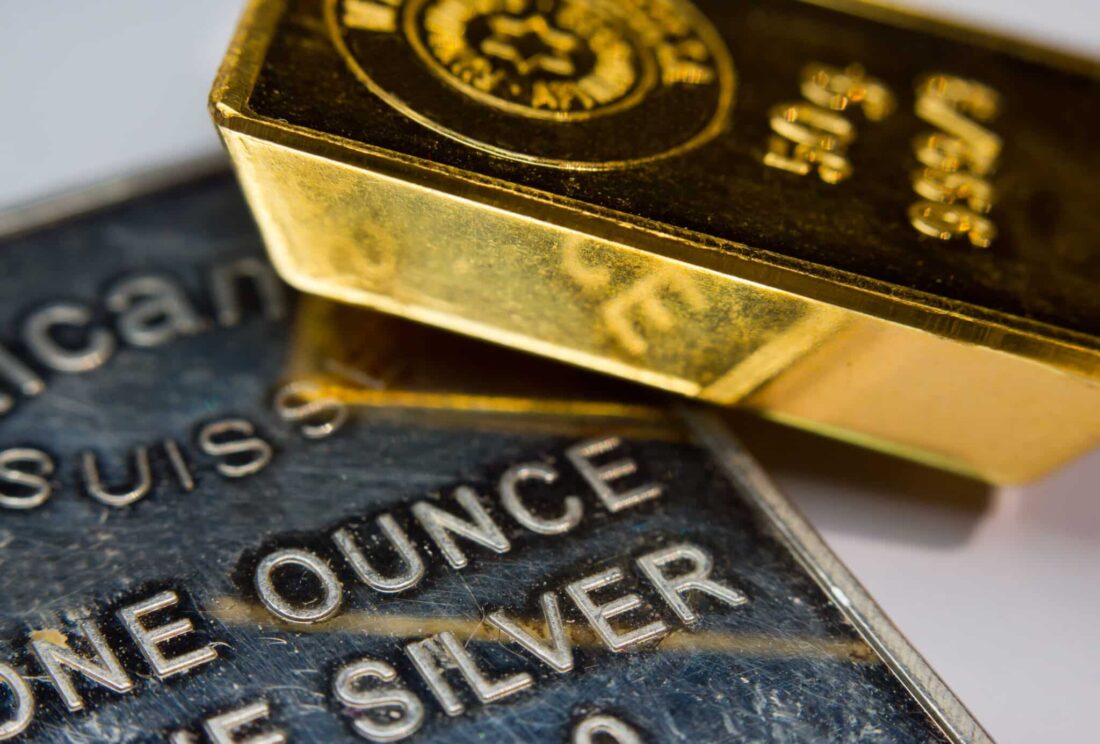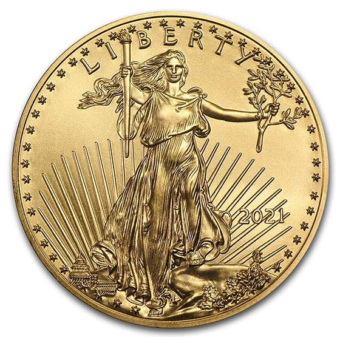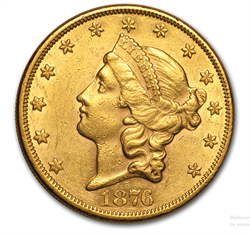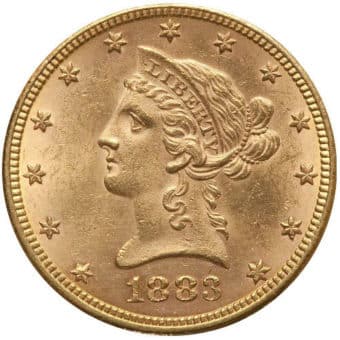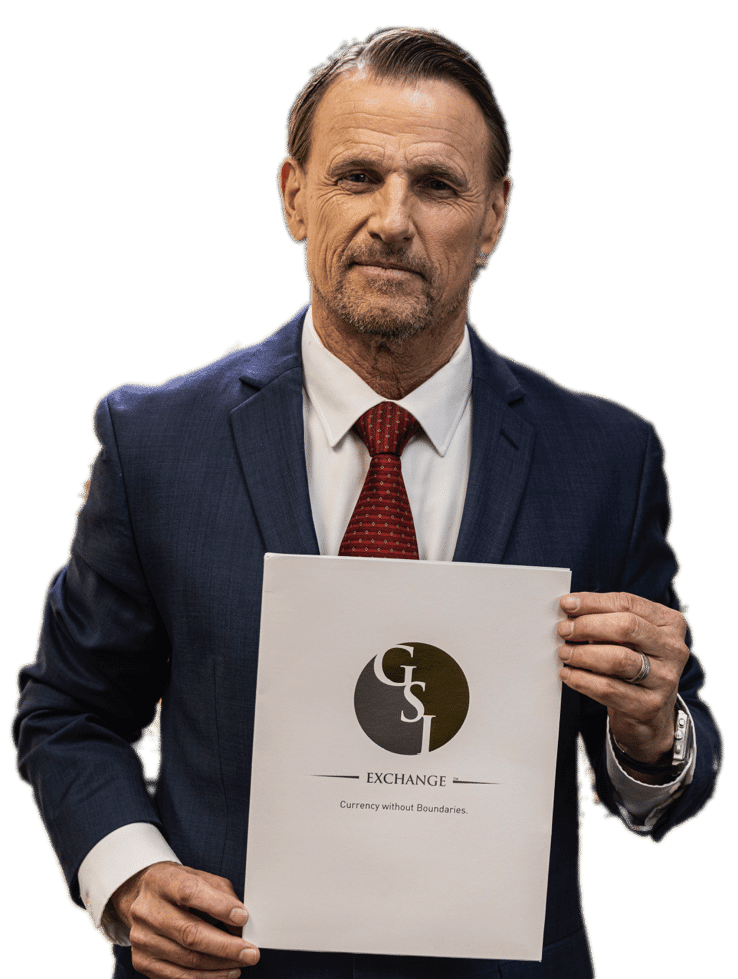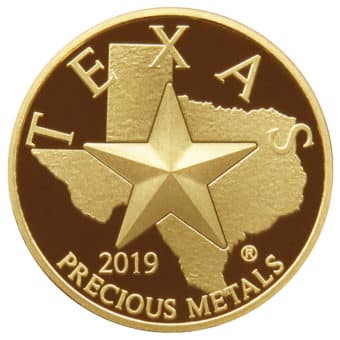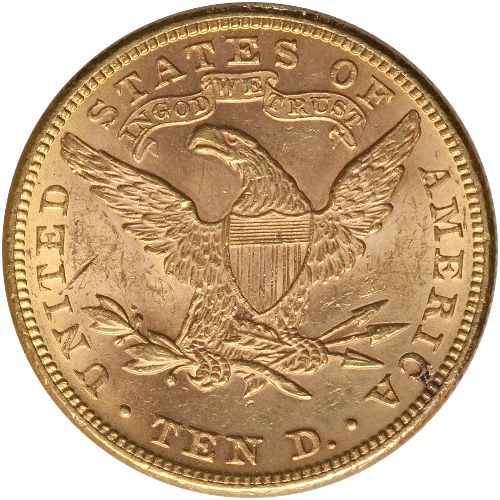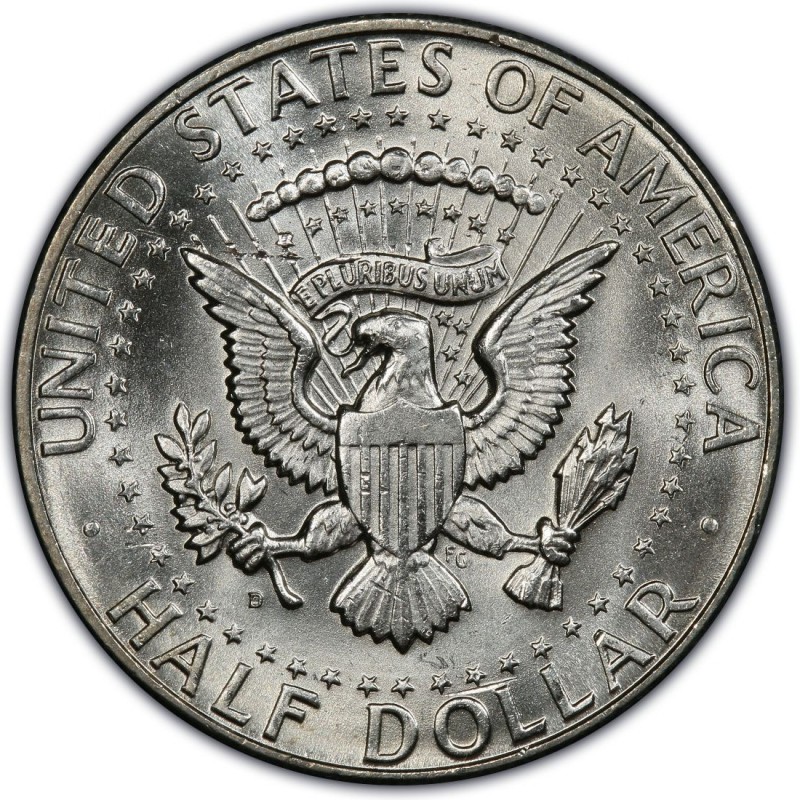Welcome to our weekly newsletter, where we decode the intricate moves of gold and silver in response to global events. In this week’s edition, we delve into the nuanced signals hidden within U.S. Treasury yield movement, unravel the shifts of the dollar index, and decipher the explosive dynamics behind the most current geopolitical events. Our aim is to arm you with actionable foresight as you navigate the gold and silver markets in the weeks ahead. Join us on this journey as we attempt to understand and capitalize on a dynamic environment where uncertainty is never the exception, but the rule.
The Gold Trail: A Daily Journey Through the Week's Market
Monday - 11.20.23: Gold and silver prices are moderately lower in early U.S. trading Monday, as investors weigh rising U.S. Treasury yields against a lower U.S. dollar index and higher crude oil prices. Asian and European markets were mixed overnight, and U.S. stock indexes are expected to open slightly higher. Trading is likely to be quieter this week due to the upcoming Thanksgiving holiday.
Tuesday - 11.21.23: Gold and silver prices rose moderately in early U.S. trading Tuesday, as traders cheered the minutes from the Federal Reserve's latest meeting, which suggested the central bank may pause its interest rate hikes for a few months. Asian and European markets were mixed in overnight trading, while U.S. stock indexes were pointed to slightly higher openings. The U.S. stock market hit multi-week highs this week amid improved risk appetite. It is a quieter trading week due to the Thanksgiving holiday on Thursday and Friday.
Wednesday - 11.22.23: Gold and silver prices are slightly higher, with gold trading just above $2,000 per ounce. Both metals have seen a bullish turn in their near-term chart postures, prompting technical traders to take long positions. Asian and European markets were mixed to firmer overnight, while U.S. stock indexes are expected to open slightly higher. The U.S. stock market has hit multi-week highs this week amid improved risk appetite. Trading is expected to be quieter this week due to the Thanksgiving holiday on Thursday and Friday.
Thursday - 11.23.23: Trading was subdued due to the Thanksgiving holiday, making it one of the year's quietest trading days with gold and silver each losing half a percent.
Friday- 11.24.23: In early U.S. trading on Friday, gold prices were slightly higher, nearing $2,000, with silver also seeing modest gains. This rise was attributed to chart-based buying and a bullish technical outlook for both metals, alongside a weaker U.S. dollar. In global news, Israel and Hamas agreed to a four-day ceasefire, which has temporarily eased market concerns over escalating Middle East tensions, contributing to a slight increase in risk appetite among investors.
Will March 2024 Bring the Next Financial Crisis?
George Gammon, entrepreneur and producer of The Rebel Capitalist Show, anticipates a potential banking crisis as early as March next year. His concerns center around the increasing use of the Federal Reserve's Bank Term Funding Program (BTFP), initially launched in response to the Silicon Valley Bank collapse. With the program's utilization doubling since March, Gammon warns of heightened systemic risk. Adding to the uncertainty, Fitch forecasts challenges for regional banks in 2024, particularly those focused on commercial loans. The critical factor is the upcoming March expiration of the BTFP, leaving Federal Reserve Chair Jerome Powell with a tough decision on whether to extend the program amidst efforts to reduce liquidity and control inflation.
Gold Prices Remain Steady Above $2,000 Amid Mixed U.S. Economic Signals
Gold prices maintained their position above $2,000 per ounce, buoyed by mixed economic signals from the latest U.S. flash PMI data. The S&P Global Flash U.S. manufacturing PMI indicated a contraction in the manufacturing sector, dropping to a three-month low of 49.4, slightly below expectations. Conversely, the service sector displayed expansion, reaching a four-month high at 50.8, surpassing forecasts. These figures suggest a neutral overall economic trend, aligning with Federal Reserve expectations of a cooling labor market and inflation. The report also noted a decline in employment across sectors and a reduction in inflation pressures, with input price inflation at its lowest in over three years. December gold futures reflected these mixed economic cues, showing a modest increase to $2,001.10 an ounce.
Digital Dystopia: The Looming Threat of BRICS' CBDCs
In an era where financial privacy is gasping for its last breath, the impending advent of a BRICS digital currency in 2024 heralds a chilling future. This development, a stark embodiment of the Orwellian surveillance state, threatens the very core of individual liberty and privacy. Spearheaded by nations with a notorious penchant for control, the Central Bank Digital Currencies (CBDCs) represent more than just a technological advancement; they are a harrowing step towards a world where every transaction is monitored, every purchase scrutinized, and every citizen's financial life laid bare to the all-seeing eye of authoritarian regimes. As countries like India, Brazil, and the juggernaut China lead this invasive charge, the specter of a world shackled by digital currencies looms ominously, promising a future where financial freedom is nothing but a relic of the past.
October Brings Lowest Home Sales in Over a Decade Amid Price Surge
In October, the U.S. housing market experienced its lowest sales level in 13 years, with a 14.6% year-over-year drop in existing home sales and a 4.1% decrease from September. Despite the downturn in sales, the median home price rose to $391,800, marking a 3.4% increase from the previous year. This contrast reflects a market grappling with tight inventory, high mortgage rates, and persistent price pressures. The National Association of Realtors noted that the limited supply, particularly of lower and mid-priced homes, continues to challenge prospective buyers, while the luxury market sees some resilience, driven partly by wealthier buyers less affected by rate fluctuations.
The Great American Divide: A Nation on the Edge of Economic Chaos
America stands at a precipice of economic disparity, with the pandemic widening the wealth gap to alarming levels. The bottom 80% has seen a stark decline in financial stability, while the affluent unabashedly parade their riches. This blatant disparity is fostering a dangerous "Robin Hood Mentality" across the country. The grim reality of falling wages, impending job cuts, and skyrocketing crime rates paints a picture of a nation grappling with deep-rooted economic and social turmoil. As we brace for what lies ahead, it's clear that America is on a turbulent path toward unprecedented civil unrest and societal upheaval.
Gold Stalls as U.S. Job Market Strengthens Unexpectedly
Gold prices remained steady despite a significant improvement in the U.S. labor market, as evidenced by a drop in weekly jobless claims to 209,000, far surpassing expectations. This better-than-anticipated labor data led to a slight sell-off in the gold market, with spot gold prices adjusting slightly post-announcement. The Federal Reserve's stance on needing labor market weakness to consider rate cuts adds context to the market's reaction. Additionally, the four-week moving average for new claims decreased, along with a drop in continuing jobless claims, underscoring a strengthening U.S. labor market.
Kiyosaki vs. Buffett in the Battle Over Bullion
In a world increasingly misled by flawed financial gurus, the recent spat between Robert Kiyosaki and Warren Buffett over gold investing strikes a nerve. Kiyosaki's scathing dismissal of Buffett's skepticism on gold reveals a deeper, more troubling trend in investment philosophy. While Buffett, with his vast empire built on diverse and productive assets, dismisses gold as a barren investment, Kiyosaki, with a flair for the dramatic, champions it as a bastion against economic turmoil. This clash isn't just a mere difference in opinion; it's a revealing glimpse into a financial world divided by fear and reason. In this arena, facts become distorted, and the real losers are those swayed by the siren song of false prophets in a market riddled with uncertainty. But is it important, or even wise, to take absolute sides?
Gold Wavers Despite Manufacturing Slowdown in the U.S.
Despite a significant downturn in U.S. durable goods orders, which fell 5.4% in October, the gold market remains unsteady and unsupported. This decline in the manufacturing sector, steeper than the expected 3.2% fall, indicates a slowdown in business equipment investment and economic momentum. However, gold prices are still hovering around the $2,000 mark, showing little reaction to these economic indicators. The ongoing high interest rates and tighter lending standards continue to suppress business investments, creating an uncertain outlook for both the manufacturing sector and gold market.
Consumer Confidence Grows Amid Inflation Concerns
The University of Michigan's latest consumer sentiment survey indicates a marginal increase in consumer confidence at the end of November, despite ongoing concerns about inflation and economic conditions. The sentiment index rose slightly to 61.3, but still reflects a six-month low after four consecutive months of decline. This cautious optimism contrasts with other positive economic indicators like low unemployment and falling gas prices. Consumers expect inflation to average higher in the next year, demonstrating heightened concerns about the cost of living and borrowing, even as the official inflation rate stands at 3.2%. The economy, while resilient and avoiding recession, faces uncertainties, particularly impacting consumer spending during the holiday season.
Congress's Hollow Acknowledgment of Fiscal Ruin
As Congress feebly acknowledges America's ballooning national debt, now a staggering $33.7 trillion, their ineptitude in addressing this crisis is nothing short of a countdown to fiscal catastrophe. This isn't just financial mismanagement; it's a harrowing march towards an economic abyss. The stark reality that debt servicing now dwarfs defense spending is a grim marker of a nation flirting with financial implosion. Congress's tepid response, mired in political squabbles and lacking any substantive action, is akin to fiddling while Rome burns. This isn't merely a policy failure; it's a dereliction of duty that threatens to plunge the country into a vortex of debt from which there may be no return. With a mere 20-year window before an inevitable default, this ticking time bomb of fiscal irresponsibility looms over future generations, a legacy of a government too paralyzed and polarized to avert disaster.
Next Week’s Key Events
Monday, November 27
- 10:00 am ET: New Home Sales (October)
Tuesday, November 28
- 9:00 am ET: S&P Case-Shiller Home Price Index (September)
- 10:00 am ET: Consumer Confidence (November)
Wednesday, November 29
- 8:30 am ET: GDP (Q3)
- 2:00 pm ET: Fed Beige Book
Thursday, November 30
- 8:30 am ET: Initial Jobless Claims (Week of November 25)
- 8:30 am ET: PCE index (October)
- 10:00 am ET: Pending Home Sales (October)
Friday, December 1
- 10:00 am ET: ISM Manufacturing (November)
IMPACT ON GOLD AND SILVER MARKETS:
New Home Sales (Oct.): This report provides insights into the real estate market's health. Strong home sales often signal economic strength, potentially boosting the dollar and pressuring gold and silver prices. Conversely, weak sales may lead to a weaker dollar, supporting these precious metals.
S&P Case-Shiller Home Price Index (Sept.): Reflecting changes in residential real estate value, rising home prices may indicate inflationary pressures, potentially supporting gold and silver as hedges against inflation.
Consumer Confidence (Nov.): This measure of consumer sentiment can affect gold and silver markets. High consumer confidence typically indicates economic optimism, which might strengthen the dollar and negatively impact precious metals. Low confidence can have the opposite effect.
GDP (Q3): A strong GDP report suggests economic growth, potentially strengthening the dollar and putting downward pressure on gold and silver. A weaker GDP can lead to a softer dollar, boosting these metals.
Fed Beige Book: This report provides a summary of economic conditions. Positive outlooks can strengthen the dollar, negatively impacting gold and silver. Negative outlooks or concerns about inflation can support these metals as safe-haven assets.
Initial Jobless Claims (Nov. 25): Lower jobless claims indicate a strong labor market, which can strengthen the dollar and pressure precious metals. Higher claims might weaken the dollar and support gold and silver prices.
PCE Index (Oct.): As a key indicator of inflation, rising PCE numbers can signal inflationary pressures, supporting gold and silver as traditional inflation hedges.
Pending Home Sales (Oct.): Similar to new home sales, this report can influence gold and silver prices through its implications on economic health and inflation.
ISM Manufacturing (Nov.): A strong manufacturing sector suggests economic growth, potentially boosting the dollar and pressuring gold and silver. A weaker report can have the opposite effect, supporting these metals.


